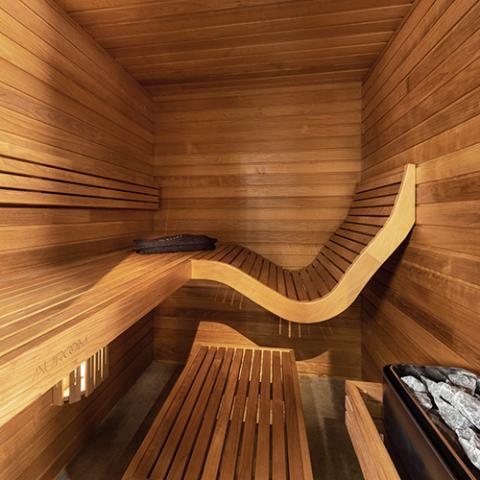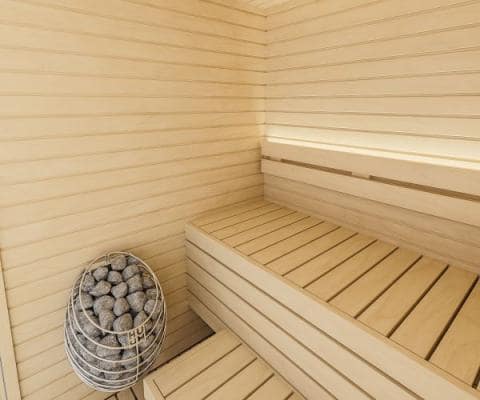The Ultimate Guide To Traditional Sauna
Table of ContentsThe Single Strategy To Use For Traditional SaunaTraditional Sauna - TruthsTraditional Sauna - QuestionsGetting My Traditional Sauna To WorkHow Traditional Sauna can Save You Time, Stress, and Money.
The majority of the weight lost in a sauna is water loss and is re-gained upon rehydrating. Without a question sauna can be a crucial component of a healthy weight loss program. To take a look at the differences between standard and IR saunas, I will certainly separate these right into verifiable, academic, and made differences.
Thus, the hottest factor in the saunawhich is at the ceiling straight over the sauna heateris generally between 185 and 190 F. Claims that a conventional sauna exceeds 200 F is just not real and not relevant for electrical saunas offered in the US. The temperature for a far-infrared sauna is typically set between 120 and 140 F; nonetheless, unlike the conventional sauna, the objective in and IR room is not to accomplish a high temperature level.
Due to this, the temperature level distinction is nearly unimportant, considering that profuse sweating causes both sauna kinds, but the method of warming the body is various. In an IR sauna the bather will feel warm and will certainly sweat profusely, yet at a lot reduced temperatures (Traditional Sauna). Hence, if the goal is to invest longer amount of times in the sauna, the IR sauna is an excellent option
When a typical sauna has actually been correctly heated, the sauna wall surfaces are warm, the air temperature level has accomplished set temperature level and the rocks are incredibly warmed. As an intriguing side note, the heated walls and the rocks are releasing far-infrared heat, combined with the warmed air, to develop an "wrapping up warmth".
What Does Traditional Sauna Mean?

When the heat is achieved, the elements cycle on and off to keep the heat. Many typical sauna users enjoy putting water over the rocks to develop heavy steam to raise sauna moisture degrees. The advantages of pouring water over the rocks consist of: making the area extra comfy, dampening the nasal flows, and enabling the use of aromatherapy by blending vital oils with the water.

When the power goes into the body, it creates the body temperature level to raise and inevitably results in sweating. In an infrared sauna it is very important for the emitters/heaters to remain on virtually frequently. Because there is no mass of rocks to retain warm, the sauna will cool if the emitters turned off.
As stated above, the sauna bather in an infrared area wants to place himself in front of running emitters to obtain optimal gain from the warm. The heating time for both spaces can be very various, relying on exactly how the spaces are utilized. For a traditional sauna, a bather needs to permit 30-40 mins for the space to accomplish a wanted temperature level and to correctly pre-heat the rocks.
Get This Report about Traditional Sauna
A well created sauna will generally accomplish a temperature of 150-160 F in regarding 30-40 minutes. For hotter temperatures, the room might require to heat for a longer period.

Traditional saunas tend to be larger (thus use more electricity) than infrared saunas, although traditional saunas are certainly offered in one and two individual sizes as well. For a two-person conventional sauna, 5x6 or 5x7 dimension is most preferred. The top bench can comfortably seat 2 or three individuals and is additionally long sufficient to relax throughout the sauna session.
Traditional Sauna Things To Know Before You Buy
The ordinary cost per kWH of power in the U.S. is roughly $0.11, so a 4.5 kW heating system will certainly cost roughly $.50 to run for one hour, if the heating system runs continuously for one hour. Normally a sauna heater will compete 75% of the initial hour and 50% of subsequent hours on considering that the elements cycle once the set temperature level is achieved.

There is a hardly ever talked about distinction in the social experience in between the 2 areas. While our culture has lost a few of the social advantage of the typical sauna experience, it can be very socially gratifying (Traditional Sauna). From family members time in the sauna, to heart-felt discussions with better halves, to sauna partiesthe traditional sauna experience can cause intimate socializing
What Does Traditional Sauna Mean?
The majority of greater end infrared spaces consist of tinted light therapy, audio systems and full-glass fronts.
Comments on “The Definitive Guide to Traditional Sauna”